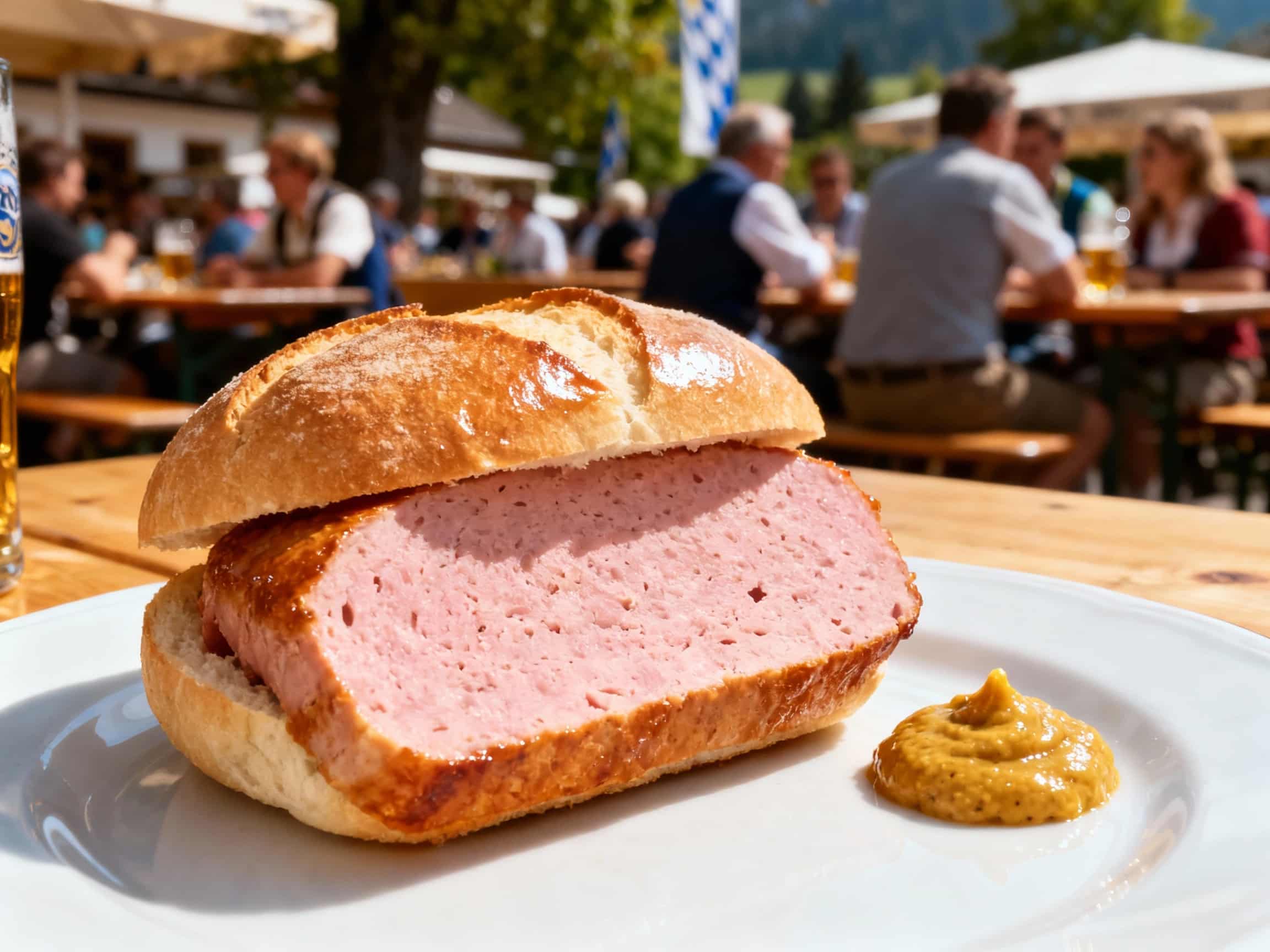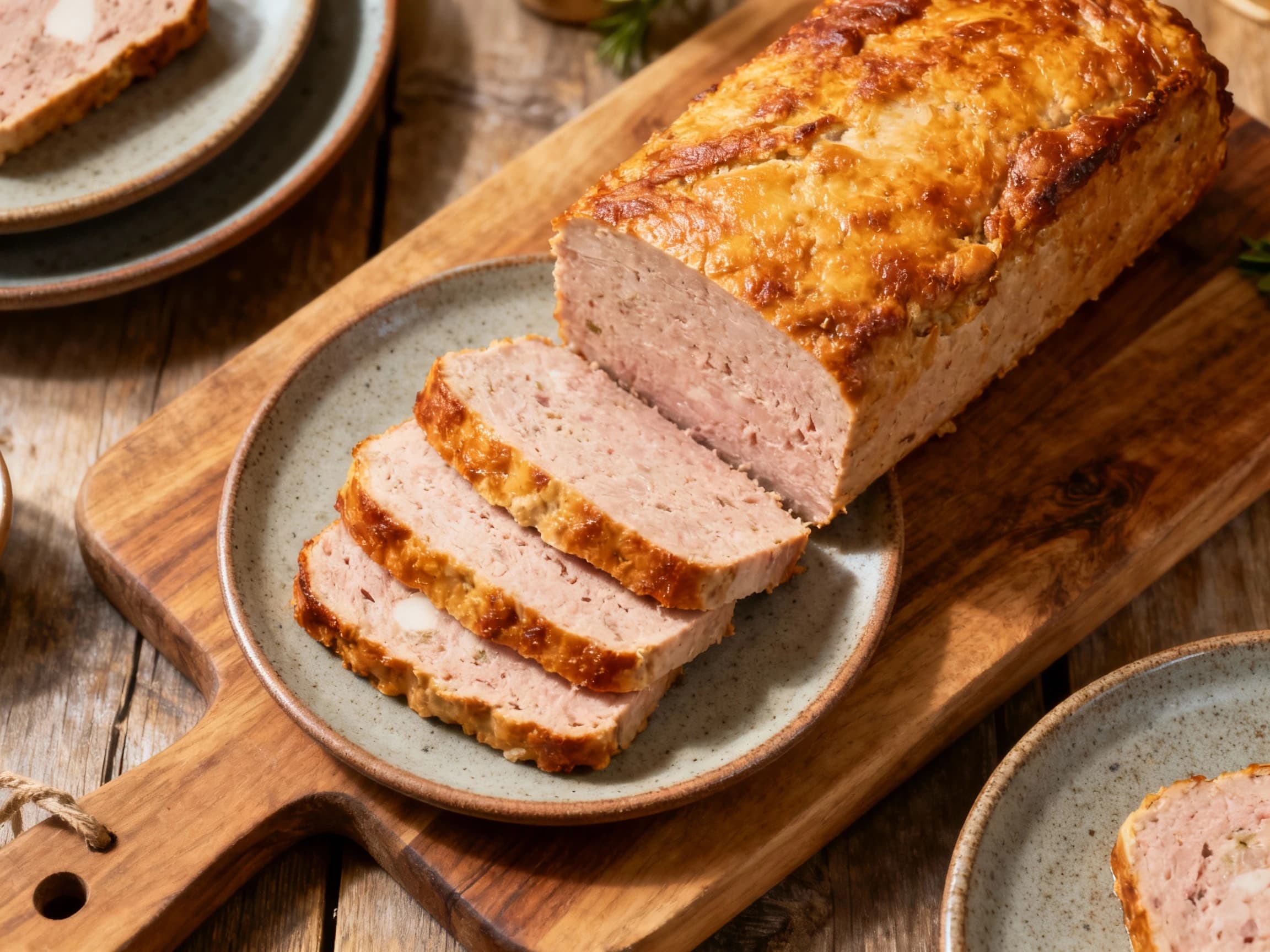
Leberkäse
Leberkäse
- Country
- Germany
- Region
- Bavaria
- Recipes
- 3 Recipes
Dish information
Leberkäse, a prominent dish in Bavarian and Austrian cuisine, is a type of "meatloaf" or "meat cake." Despite its name, which translates to "liver cheese," traditional Leberkäse does not contain liver or cheese. The name is believed to derive from its "Leberknödel" (liver dumpling) like texture and its resemblance to a coarse sausage, or potentially from "Lab" (rennet) and "Käse" (cheese) as ingredients in old sausage-making processes. Its creation dates back to at least the 18th century, evolving from regional sausage-making traditions. It's made from finely minced beef and pork, cured bacon, and seasoned with salt, pepper, and often a hint of mace or nutmeg. This mixture is then baked in a loaf pan, developing a characteristic brown crust and a dense, uniform, pink interior. Leberkäse is incredibly versatile, enjoyed hot or cold, typically sliced and served in a bread roll (Leberkässemmel) as a popular snack or quick meal. It is a staple at Bavarian beer gardens, festivals, and butcher shops throughout Bavaria and Austria.
Timeline
The origins of Leberkäse can be traced to German sausage-making traditions of the era.
Leberkäse becomes a recognized and popular meat product throughout Bavaria.
The term "Leberkäse" is commonly found in regional culinary texts.
Leberkäse becomes a staple street food and pub fare in Munich and surrounding areas.
The first documented wide-scale commercial production of ready-to-eat Leberkäse begins.
Bavarian emigrants spread the popularity of Leberkäse to other German-speaking regions and beyond.
Artisanal butcher shops revive traditional Leberkäse recipes with higher quality ingredients.


